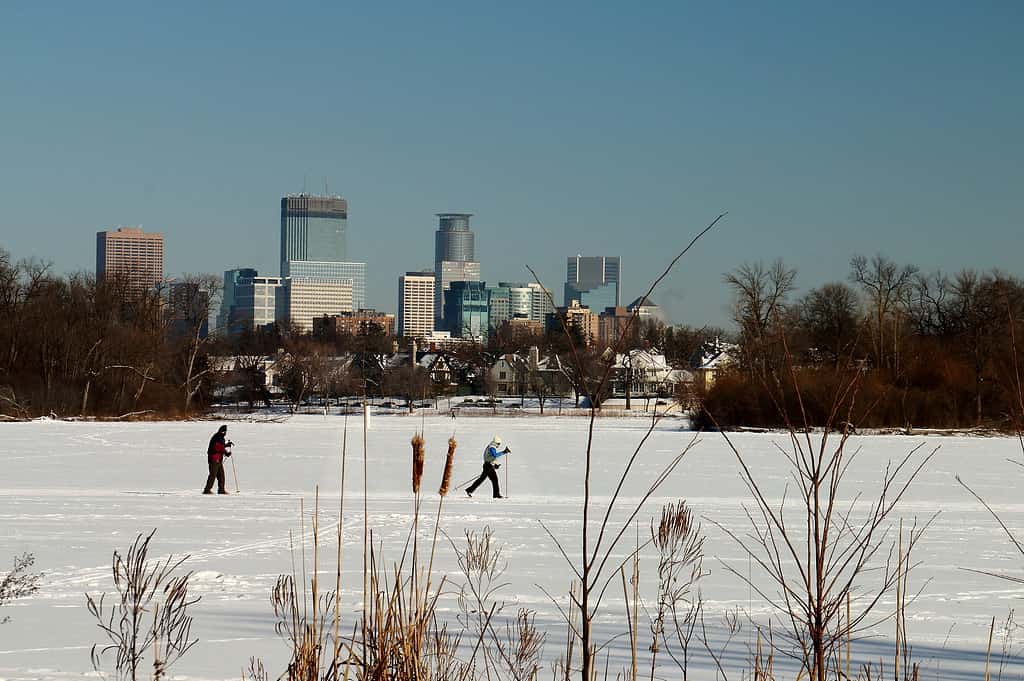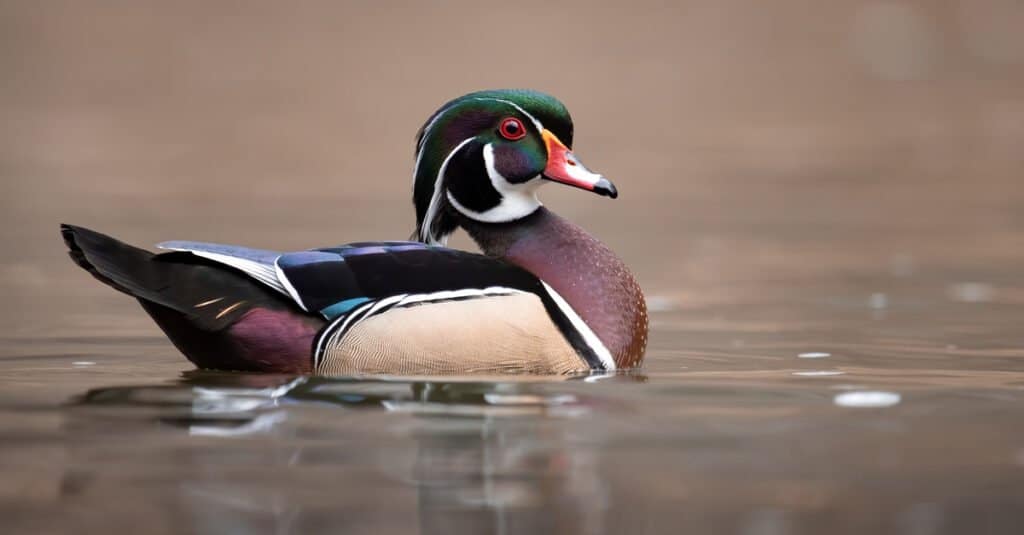In Minnesota, residents and visitors can plan a trip around four distinct seasons. For some humidity and warmth, summer is a great season to visit. For birders, the spring migration is a must-see. During fall, the trees display gorgeous colors, and the temperatures start dipping. Winter is exceptionally long, allowing for tons of fun winter sports and some cozy nights cuddled up by the fireplace. Despite Minnesota being known for its snowy, windy, and freezing weather during the winter season, there have been some irregularities over the years. But how does this winter compare to Minnesota’s warmest ever?
The Warmest Winter Ever Recorded in Minnesota’s History

The Twin Cities typically see brutal winters, but the winter beginning in December 1877 was so warm comparably, that locals called it the “Year Without a Winter.”
©Joseph Sohm/Shutterstock.com
Minnesotans are accustomed to blistery winters. Even tourists know not to venture too far north if they prefer a balmy winter season sans snow. However, the state has seen some remarkably warm winters, with one year even earning the title, “Year Without a Winter.” This was during the 19th century during the winter of December 1877 through February 1878. Then, Twin Cities recorded a daily average of 29°F. That winter was one for the books. In 1930, Minnesotans again came close to that record when the average winter temperature was 26.9°F. It wasn’t until the 21st century in the winter of 2001 to 2002 that a similar winter befell Minnesota. The average temperature across winter months was 26.8°F.
El Niño winters are known to bring warmer-than-usual temperatures, particularly during the 1997 to 1998 winter. The average temperature then reached 22.2°F. In 2015, a new record was set for the warmest day in December (however, this record did not account for the years prior to 1895). The temperature this month averaged 25°F, a whopping 12 degrees above normal. There were several years before and after that were also considerably warmer, including 2011, 2014, 2018, and 2020. Minnesotans have long noticed the trend, with some of them enjoying the anomalies as they’ve occurred. For example, on December 19, 2011, the afternoon temperature in Madison in Lac qui Parle County recorded a 60°F high, which many residents took as an opportunity to enjoy an al fresco lunch!
Average Highs and Lows This Year

Winters in Minnesota are generally heavy with snow.
©Roger Siljander/Shutterstock.com
The coldest months in Minnesota include December through February. Subzero temperatures, though, may start in November and run later into March depending on the part of the state. In St. Paul, the state’s capital, the summers are wet with warm temperatures and the winters bring snow, lots of wind, and freezing temperatures. On average throughout the year, the temperature peaks at 91°F and doesn’t usually fall below -10°F. This winter temperatures fell to -13°F for a single day, however, right at the start of the year on January 3rd. The warmest day was on February 3rd when the recorded high was 45°F.
In Minneapolis, the other of the Twin Cities, the coldest day through the winter season was December 23rd when the recorded low reached -11.9°F. The warmest day arrived on February 8th, when the recorded high reached 45°F. Although most people think of the Twin Cities when they think of Minnesota, there is another city in Minnesota worth highlighting. International Falls, also known as the “Ice Box of the Nation,” is where during the month of January, the average subzero days are usually 18. This winter, however, was a bit different. There were only eight subzero days, just below the average subzero days of the Twin Cities (usually nine). The warmest day in January came on January 15th in International Falls, when the recorded high was 37.9°F.
Animal Migration in Minnesota

In Minnesota, wood ducks are one of the first animals you may spot once March brings warmer temperatures.
©Harry Collins Photography/Shutterstock.com
Just as the icy season gets swept away and life returns to the state, the sky also fills up with glorious colors while birds sing their happy spring songs for Minnesotans. Every spring, dozens of different bird species make their way north to find the best nesting spots where they can mate and raise their young. When March brings warmer days, some of the first birds you can spot include Canada geese and wood ducks. You may also manage to catch a glimpse of great horned owls, bald eagles, and broad-winged hawks.
During the month of April, you can feast your eyes on yellowlegs, willets, dunlins, and sandpipers. April also brings some early songbirds like the purple marlin and the yellow-rumped warbler. This is just the start of all the action birders can get because, in May, even more colors litter the skies and trees with ruby-throated hummingbirds, red-eyed vireo, rose-breasted grosbeaks, and indigo bunting making their way through. Be patient for trumpeter swans because they make their way through to northern Minnesota in June. If you’re looking for the hotspots to check out these migratory bird species, head up to Minnesota Northwoods for the optimal vacation spot.
The photo featured at the top of this post is © Roger Siljander/Shutterstock.com
Thank you for reading! Have some feedback for us? Contact the AZ Animals editorial team.






